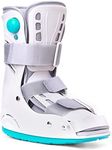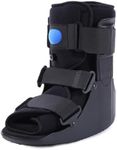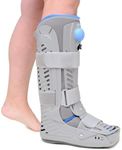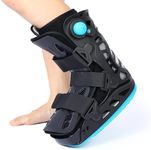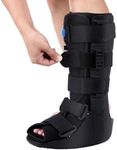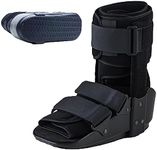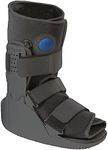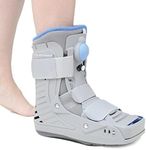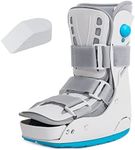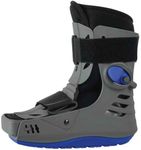Buying Guide for the Best Fracture Boots
Choosing the right fracture boots is crucial for ensuring proper healing and comfort during recovery. Fracture boots, also known as walking boots or medical boots, are designed to immobilize and protect the foot and ankle after an injury or surgery. When selecting a fracture boot, it's important to consider several key specifications to ensure you get the best fit and support for your needs.SizeSize is one of the most important factors when choosing a fracture boot. A properly fitting boot will provide the necessary support and immobilization without causing additional discomfort. Fracture boots come in various sizes, typically ranging from small to extra-large. To find the right size, measure the length and width of your foot and compare it to the manufacturer's sizing chart. Ensure the boot fits snugly but not too tight, allowing for some swelling that may occur during recovery.
AdjustabilityAdjustability refers to the ability to customize the fit of the boot using straps, laces, or other mechanisms. This feature is important because it allows you to adjust the tightness and support as your foot heals and changes in size. Look for boots with multiple adjustable straps or a lacing system that can be easily tightened or loosened. This will help you maintain a comfortable fit throughout your recovery period.
Support LevelSupport level indicates how much immobilization and protection the boot provides. Fracture boots can range from low to high support. Low-support boots are more flexible and allow for some movement, making them suitable for minor injuries or the later stages of recovery. High-support boots are more rigid and provide maximum immobilization, ideal for severe fractures or post-surgery recovery. Choose a support level based on the severity of your injury and your doctor's recommendations.
WeightWeight is an important consideration because a heavy boot can be cumbersome and uncomfortable to wear for extended periods. Lightweight boots are generally more comfortable and easier to walk in, especially if you need to wear the boot for several weeks. However, ensure that the boot is still sturdy enough to provide the necessary support. Balance the need for a lightweight design with the requirement for adequate protection and stability.
MaterialThe material of the fracture boot affects its durability, comfort, and breathability. Common materials include plastic, foam, and fabric. Plastic boots are durable and provide strong support but may be less comfortable. Foam and fabric boots are softer and more comfortable but may wear out faster. Consider your comfort preferences and the expected duration of use when choosing the material. Breathable materials can help prevent sweating and skin irritation.
Sole TypeThe sole type of the fracture boot impacts your ability to walk and the level of traction provided. Boots with a rocker sole are designed to help you walk more naturally by promoting a rolling motion. Flat soles offer more stability but may be harder to walk in. Choose a sole type based on your mobility needs and the advice of your healthcare provider. A good sole should provide enough traction to prevent slipping and support your walking gait.
